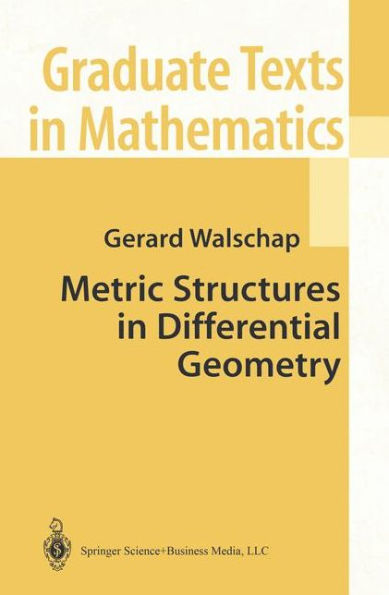This text is an elementary introduction to differential geometry. Although it was written for a graduate-level audience, the only requisite is a solid background in calculus, linear algebra, and basic point-set topology. The first chapter covers the fundamentals of differentiable manifolds that are the bread and butter of differential geometry. All the usual topics are cov ered, culminating in Stokes' theorem together with some applications. The students' first contact with the subject can be overwhelming because of the wealth of abstract definitions involved, so examples have been stressed throughout. One concept, for instance, that students often find confusing is the definition of tangent vectors. They are first told that these are derivations on certain equiv alence classes of functions, but later that the tangent space of ffi.n is "the same" n as ffi. . We have tried to keep these spaces separate and to carefully explain how a vector space E is canonically isomorphic to its tangent space at a point. This subtle distinction becomes essential when later discussing the vertical bundle of a given vector bundle.
1100017756
Metric Structures in Differential Geometry
This text is an elementary introduction to differential geometry. Although it was written for a graduate-level audience, the only requisite is a solid background in calculus, linear algebra, and basic point-set topology. The first chapter covers the fundamentals of differentiable manifolds that are the bread and butter of differential geometry. All the usual topics are cov ered, culminating in Stokes' theorem together with some applications. The students' first contact with the subject can be overwhelming because of the wealth of abstract definitions involved, so examples have been stressed throughout. One concept, for instance, that students often find confusing is the definition of tangent vectors. They are first told that these are derivations on certain equiv alence classes of functions, but later that the tangent space of ffi.n is "the same" n as ffi. . We have tried to keep these spaces separate and to carefully explain how a vector space E is canonically isomorphic to its tangent space at a point. This subtle distinction becomes essential when later discussing the vertical bundle of a given vector bundle.
69.99
In Stock
5
1

Metric Structures in Differential Geometry
229
Metric Structures in Differential Geometry
229Paperback(Softcover reprint of the original 1st ed. 2004)
$69.99
69.99
In Stock

Product Details
| ISBN-13: | 9781441919137 |
|---|---|
| Publisher: | Springer New York |
| Publication date: | 11/29/2010 |
| Series: | Graduate Texts in Mathematics , #224 |
| Edition description: | Softcover reprint of the original 1st ed. 2004 |
| Pages: | 229 |
| Product dimensions: | 6.10(w) x 9.25(h) x 0.24(d) |
From the B&N Reads Blog
